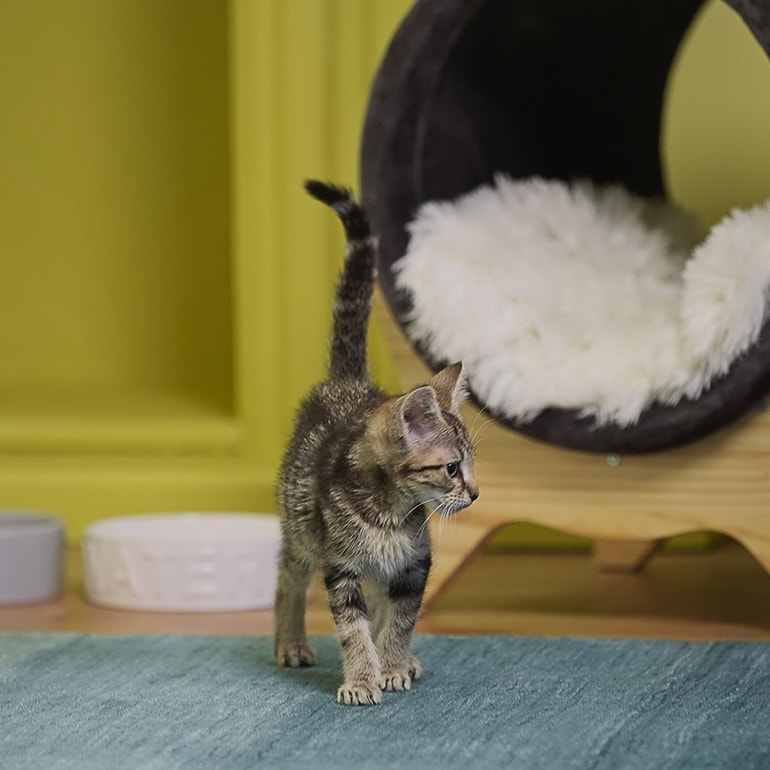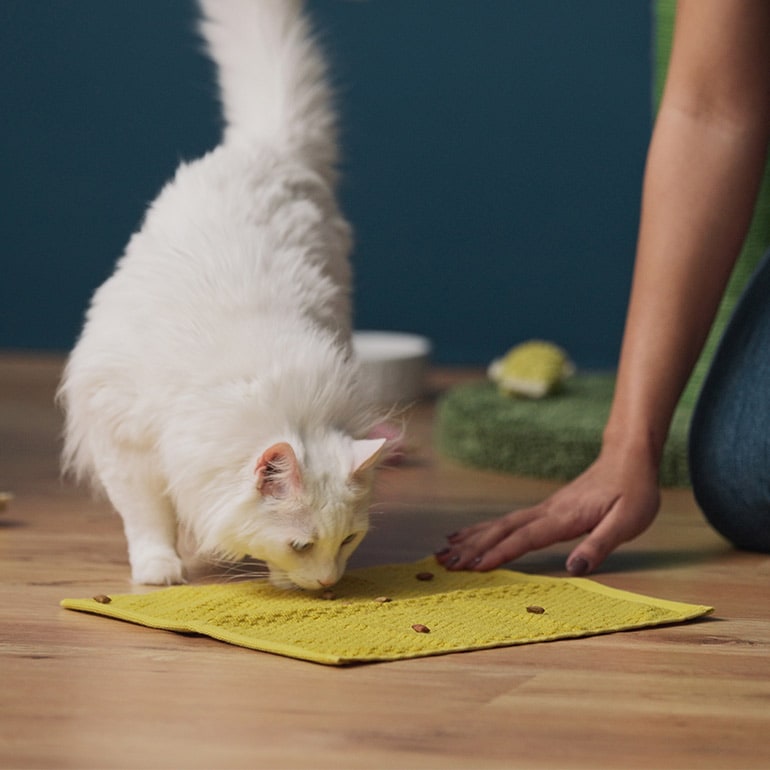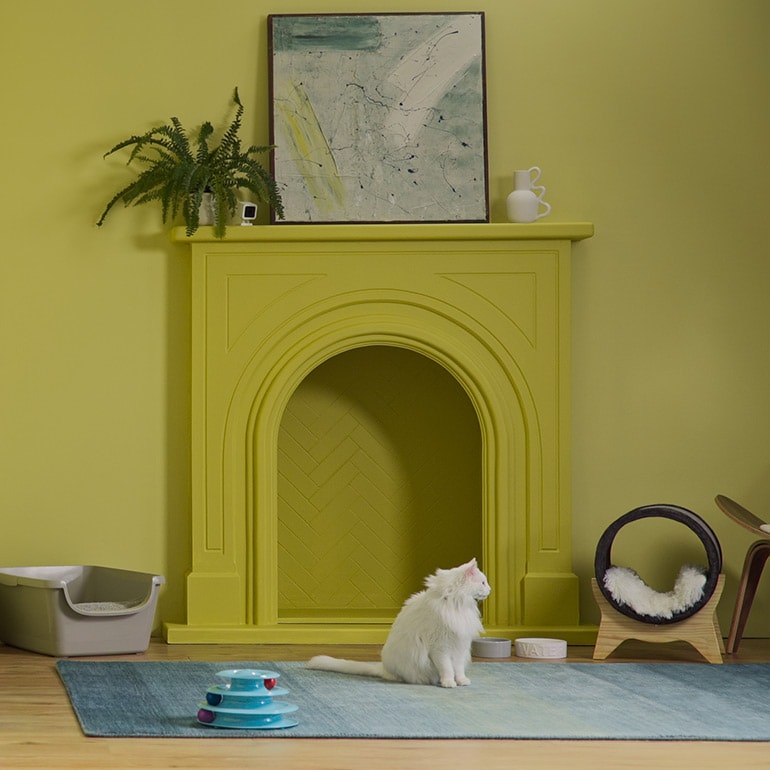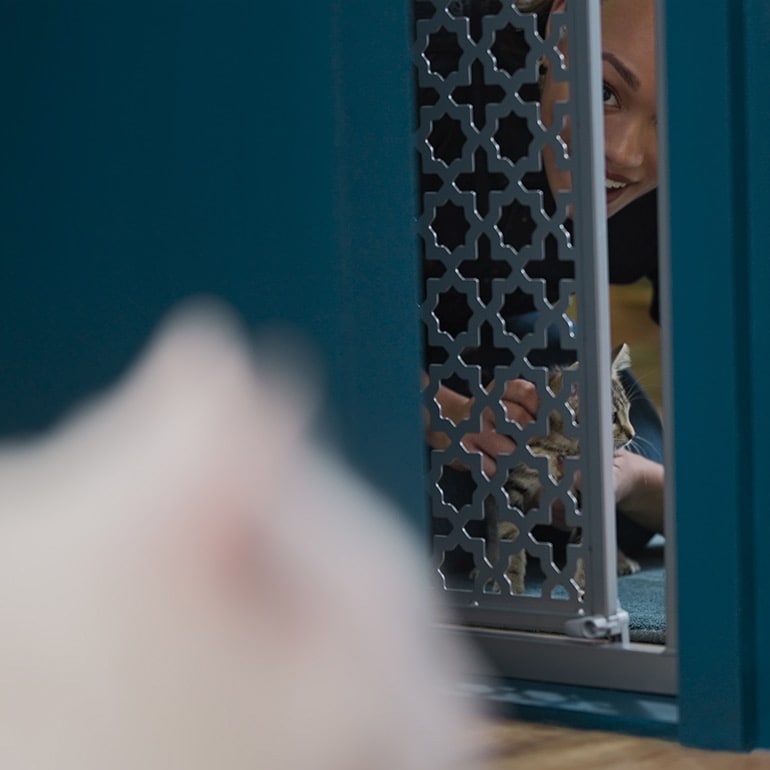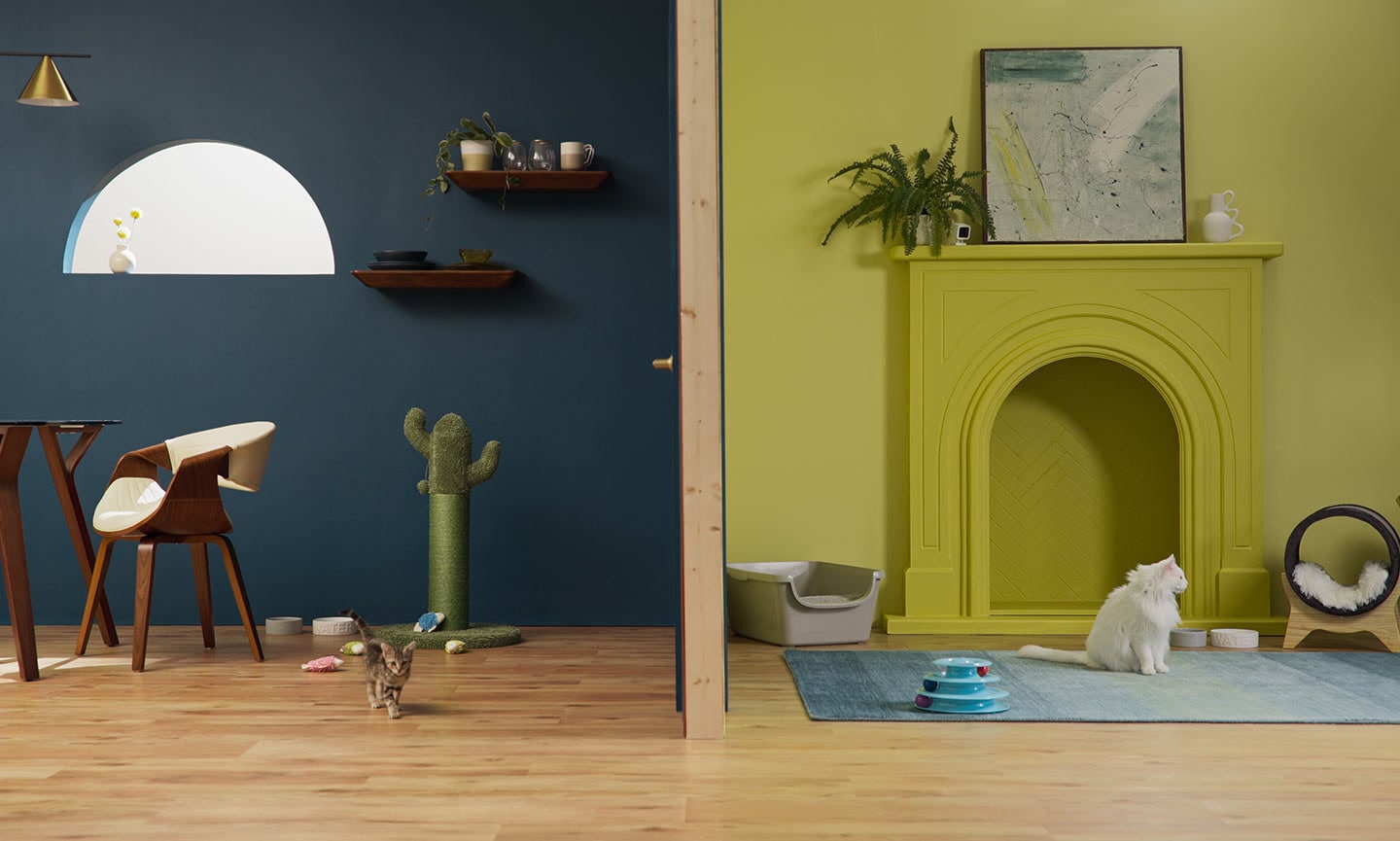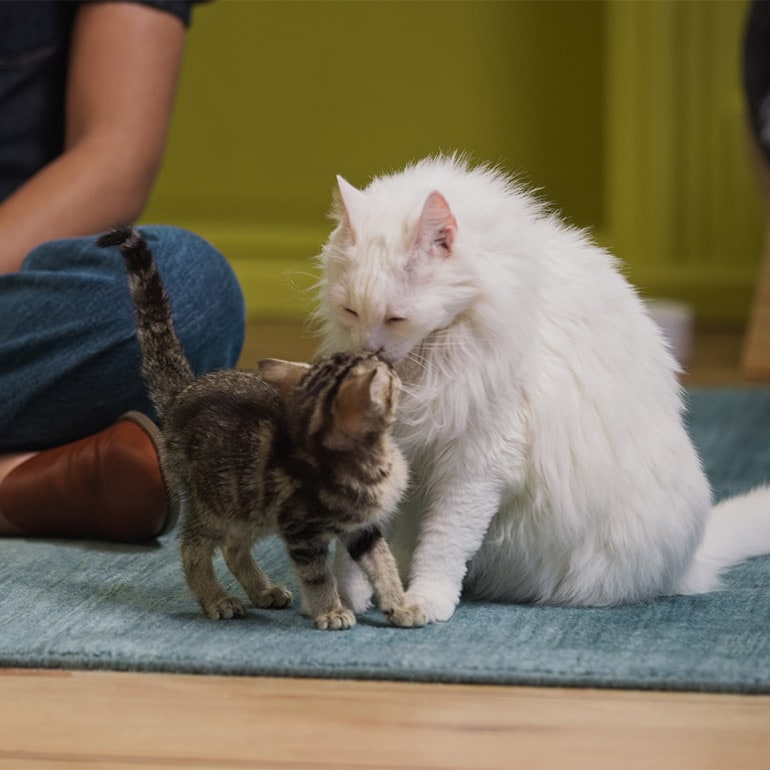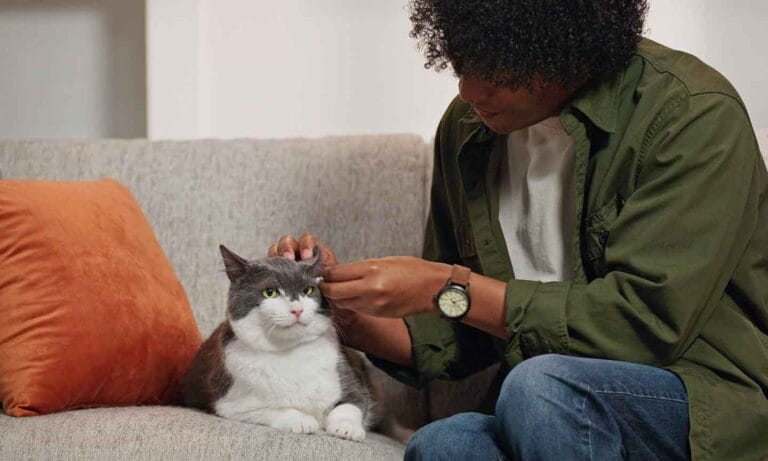When it comes to how to introduce cats, remember these key points:
- Always keep your pets’ safety in mind.
- Take things very slowly.
- Make sure both pets are completely calm before you move on to the next challenge.
Many cats can learn to love one another over time. With patience, your kitties could soon become besties too!
Are These Cats a Match?
Before thinking about how to introduce your cats to each other, it’s important to take an objective look at each animal to determine if introducing them is a good idea. Consider these factors:
- Breed: Some breeds of cat are more sociable than others. Research your cats’ breeds to find out how likely it is that your pets will get along—and how much training it’s likely to take to get them to coexist peacefully.
- Size: If one of your cats as much larger than the other, there may be a greater chance of bullying or injury. There are always exceptions, of course, but size is an important factor when it comes to safely introducing these furry friends.
- Socialization history: If your cat is super-friendly and interacts with other animals gently, they’re likely to behave similarly toward a new pet in your home. If your cat is fearful, or hasn’t been exposed to other animals before, a new housemate may be scary to them, leading to aggressive behaviors.
- Past interactions: If your cat has had a scary or traumatic experience involving another feline, they may be fearful of a new cat in your home.
- Energy level: A high-energy kitten may not be the best fit for a home with a low-energy cat, for example, and vice-versa.
Supplies for Introducing Cats
Make sure you have these items on hand before you begin cat introductions.
- Pet gate
- Towels or blankets
- Cat treats and/or catnip
- Two teaser or wand toys
- A pet camera (optional)
You’ll also need to make sure each cat has their own basic supplies, including food, water, litter box, scratch pad and toys. It’ll take some time before your cats get to be in the same room together, so you’ll need to double up on these items so that each cat’s space has them.
Introducing Cats, Step-by-Step
Let’s set expectations before we begin: Introducing cats is not a speedy process. In fact, it can take weeks or months before some cats will start to feel comfortable around each other, and other pairs of cats may never be able to coexist peacefully.
For the best chances of success, move through these steps at your cats’ pace, without rushing either pet through the process. If either cat displays the following signs of stress, take a break and revert to the previous step.
- Crouching
- Arched back
- Tucked tail
- Ears flattened down
- Facing sideways (ready to escape)
- Hiding
- Hissing
Remember: Moving too quickly through these steps can backfire, stressing your cats and possibly requiring you to begin the process all over again from the start.
1 Begin by completely separating your cats.
Give your new cat their own room with access to food, water, a litter box, scratch pad and toys. Keep the door closed so your other cat can’t enter, and be careful when opening the door to prevent unexpected encounters. It’s a good idea to set up a pet gate in the doorway between their rooms, too, to prevent accidental encounters when you move from one room to the other. This stage is all about letting both cats establish a base level of comfort before moving on to more direct interactions.
Give your cats a day or two to get used to their new space before moving on to the next step.
2 Start a scent exchange.
Your cats will be able to smell each other through the door, and they’ll pick up scents on you, too. Allow the cats to sniff your hands and clothing when you interact with them, so they get used to each other’s smells.
You can also rub a towel or blanket all over one cat, then place it on the floor for the other to explore. Sprinkle favorite treats or catnip (if your cats like catnip) all over each towel and allow them to approach and sniff. These will help your cats form a positive association with each other’s scent. Repeat this towel game daily.
3 Swap the cats’ spaces.
Next, let the cats explore each other’s spaces—while keeping them physically separated through a closed door. Watch each cat closely as they move around the other cat’s territory. You can let the cats explore for a few hours or even or an entire day.
Again, allow the two cats to sniff each other under the door, and monitor for signs that either cat is uncomfortable. Since there is a door between them, you will be listening for any unhappy vocalizations, such as growling and hissing. If you see or hear either cat show these signs of stress, go back to the previous step.
4 Encourage play near the door.
If you don’t witness signs of upset for at least 24 hours, it’s time to initiate contact—but don’t open the door just yet. Use a string toy to encourage one cat to bat at it near the door. Use another string toy under the door to lure the other cat over. Allow the cats to bat at their respective strings, gradually bringing them closer together at the base of the door. Encourage the cats to play “patty cake” with each other’s paws beneath the door, if space allows.
Look out for hissing, growling, yowling or hitting with force, all signs that one or both cats are agitated. If those signs occur, go back to the previous step.
5 Let the cats see each other.
If the string toy experiment is a success, it’s time to let the cats see each other. Open the door an inch and allow the cats to peer through. You may hear a little hissing or growling when they first lay eyes on each other. Distract them from staring at each other by diverting their attention to a toy. If hissing or growling occurs despite your distractions, go back to the previous step.
If the cats do not display signs of agitation, offer them treats, praises and petting. Try to get them both to bat at a string toy. As long as they remain calm, allow the cats to sniff and see each other for short sessions, about 5-10 minutes 3-5 times throughout the day.
6Let the cats interact through the gate.
When the cats are able to remain calm when they see each other through the door, it’s time to open the door. If you haven’t already put a pet gate in the doorway, now’s the time to set it up so the cats can see more of each other without any physical contact.
Start with short periods of interaction, gradually lengthening the time of each session. While they are interacting through the gate, look for soft eye contact, blinking and elevated tails—all signs that they are feeling friendly.
If both cats display these signs, you can use two string toys, one for each cat, and allow them to play on either side of the gate. Continue to watch for relaxed body language. There should be no hissing, growling or any other overt signs of fear (ears pulled back, pupil dilation, crouched position) or aggression (fur standing on end, puffed tail, lashing tail, lunging forward to swat). If you see these signs, try to distract them with a toy; if that fails, go back to the previous step.
Let the cats interact through the gate for 1-2 days. If they remain calm, it’s time to move on to the next step.
7Let the cats meet face to face.
Remove the pet gate, and supervise closely. Distract the cats with a toy or a loud noise, like hand clapping, if they begin staring intently toward each other.
Let the cats interact in person for 5-10 minute sessions, 3-5 times each day. If one of the cats appears overwhelmed or fearful, shorten their periods of interaction. If aggression rears its ugly head, separate the cats and revert to the previous step.
Even if all goes well during these brief sessions, keep the cats living in separate areas for a minimum of 5-7 days and supervise all interactions. Gradually extend the length of each session in 15 minute increments. If both are behaving well, you can periodically leave the room, remembering to listen for aggressive signals.
8Try letting the cats spend time together without you.
After 7-10 days without signs of fear or aggression, you can start leaving them home alone for short periods of time. You can use a pet camera to watch how the cats behave in your absence—but remember, if either cat has displayed any sort of stressed or aggressive behavior, it’s best to keep them separate when you’re not around.
If they appear to be getting along, on the other hand, gradually lengthen the amount of time the new brother cat can be alone with Noodles. Eventually, they’ll be safe together 24/7.
FAQs
Q:When can I leave my cats alone together?
A:When you can leave your cats alone together depends on the cats themselves. There is no standard timeframe for how long the introduction period should last. It could be days or weeks or even months. But if you go through the steps above and neither cat acts stressed or aggressive, you can start allowing them to spend time loose together.
If you have any doubts about whether your pets are safe alone together, continue to separate them whenever you are not there to supervise—even if it means continuing to keep them in separate areas months, years or even their whole lives. It’s an inconvenience, sure, but minor when you consider the possible alternative of one or both of your pets getting hurt.
Q:What if my cats still aren't getting along?
A:If your cats aren’t adjusting, review what you’ve done. It’s important to take things very slowly when introducing cats. If you rush, you’ll get nowhere fast. Sometimes it’s worth trying the protocol again from the beginning, but even more slowly.
If your cats are still not getting along, consult a certified behavior consultant. These professionals can help you figure out if your cats need additional training, or are simply not a good fit.
Like this story? Check out more of our favorite reads:
Share:

